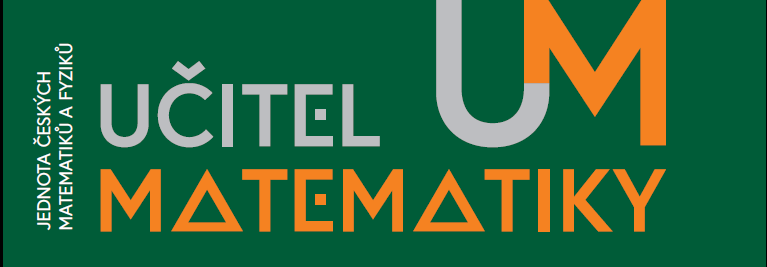Riešenie matematických úloh s kreativitou a porozumením
Abstrakt
Článok sa zaoberá problematikou výuky matematiky založenej na využívaní riešenia vhodných úloh, ktoré podporujú rozvoj kreatívneho myslenia a správne porozumenie matematickým pojmom. Autori poukazujú na to, že rozvoj kreatívneho myslenia je dôležité pro schopnosť riešiť praktické problémy. Tento prístup k riešeniu matematických úloh je ilustrovaný na riešení rovníc a nerovníc s parametrom metódou nulových bodov.
Reference
Akgün, L. & Őzdemir, M. E. (2006). Students’ understanding of the variable as general number and unknown: a case study. The Teaching of Mathematics, 9(1), 45–51.
Bardini, C., Radford, L. & Sabena, C. (2005). Struggling with Variables, Parameters, and Indeterminate Objects or How to Go Insane in Mathematics. In H. L. Chick, & J. L. Vincent (Eds.), Proceedings of the 29th Conference of the International Group for the Psychology of Mathematics Education, Vol. 2 (129-136). Melbourne: PME.
Bednarz, N., Kieran, C., & Lee, L. (Eds.) (1996). Approaches to Algebra, Perspectives for Research and Teaching. Dordrecht /Boston/London: Kluwer.
Hejný, M. (1990). Teória vyučovania matematiky 2. Bratislava: SPN.
Hejný, M., (2014). Vyučování matematice orientované na budování schémat: Aritmetika 1. Stupně. Praha: Univerzita Karlova, Pedagogická fakulta.
Hoffman, B. (2010). „I think I cat, but Im afraid to try“: The role of self-efficaly beliefs and mathematics anxiety in mathematics problem-solving efficiety. Learning and Individual Differences, 20(3), 276-283. doi: 10.1016/j.lindif.2010.02.001
Květoň, P. (1990). Kapitoly z didaktiky matematiky I. Ostrava: Pedagogická fakulta.
Květoň, P. (1986). Kapitoly z didaktiky matematiky II. Ostrava: Pedagogická fakulta.
Květoň, P. (1990). Kapitoly z didaktiky matematiky III. Ostrava: Pedagogická fakulta.
Ma, L. (1999). Knowing and Teaching Elementary Mathematics: Teachers´ Understanding of Fundamental Mathematics in China and the United States. Mahwah – New Jersey: LEAP.
MacGregor, M. & Stacey, K. (1993). Seeing a pattern and writing a rule. In Proceedings of the 17th International Conference for the Psychology of Mathematics Education, Vol. 1 (181-188). Japan: University of Tsukuba, PME.
Mevarech, Z. & Kramarski, B. (2014). Critical Maths for Innovative Societies: The Role of Metacognitive Pedagogies. OECD Publishing. http://www.oecdilibrary.org/education/critical-maths-forinnovative-societies_9789264223561-en
Polák, J. (2014). Didaktika matematiky. Plzeň: Fraus.
Polák, J. (2016). Didaktika matematiky II. Plzeň: Fraus.
Quinlan, C. (2001). From Geometric Patterns to Symbolic Algebra is Too Hard For Many. In 24th Annual MERGA Conference, Sydney (426-433).
Radford, L. (1996). The roles of Geometry and Arithmetic in the development of Elementary Algebra. In N. Bednarz & al. (Eds.), Approaches to Algebra: perspectives for research and teaching (39-53). Dordrecht: Kluwer.
Radford, L. (2000). Signs and meanings in students' emergent algebraic thinking: A semiotic analysis. Educational Studies in Mathematics, 42(3), 237-268.
Radford, L. (2003). Gestures, speech and the sprouting of signs. Mathematical Thinking and Learning, 5(1), 37-70.
Sfard, A. (1991). On the dual Nature of Mathematical Conceptions: Reflections on Processes and Objects as Different Sides of the Same Coin, Educational Studies in Mathematics, 22(1), 1-36.
Schoenfeld, A. & Arcavi, A. (1988). On the Meaning of Variable. Mathematics Teacher, 81(6), 420-427.
Sierpinska, A. (1994). Understanding in Mathematics. London-Bristol: The Falmer Press.
Skemp, R. R. (1976). Relational understanding and instrumental understanding. Mathematics Teaching, 77, 20-26.
Šedivý, J. a kol. (1978). Matematika pro první ročník gymnázia. Praha: SPN.
Trigueros, M. & Ursini, S. (1999). Does the understanding of variable evolve through schooling? In Proceedings of the 23rd Conference of the International Group for the Psychology of Mathematics Education, Vol. 4 (273-280). Haifa, Israel: PME.

